Construction is one of the most in-demand career fields today, and it’s no wonder why. The construction industry is growing faster than any other sector in the U.S., with many job postings increasing by as much as 20 percent over the next decade. Whether you’re looking for a construction job or are simply exploring your career options, having a solid resume is essential to landing that perfect interview. As with any job search, you must ensure your resume highlights your skills and experience effectively so hiring managers will be eager to meet you in person. This construction resume example and writing guide will give you all the tips you need to build an impressive document that will get you called for an interview.
Construction Resume Example
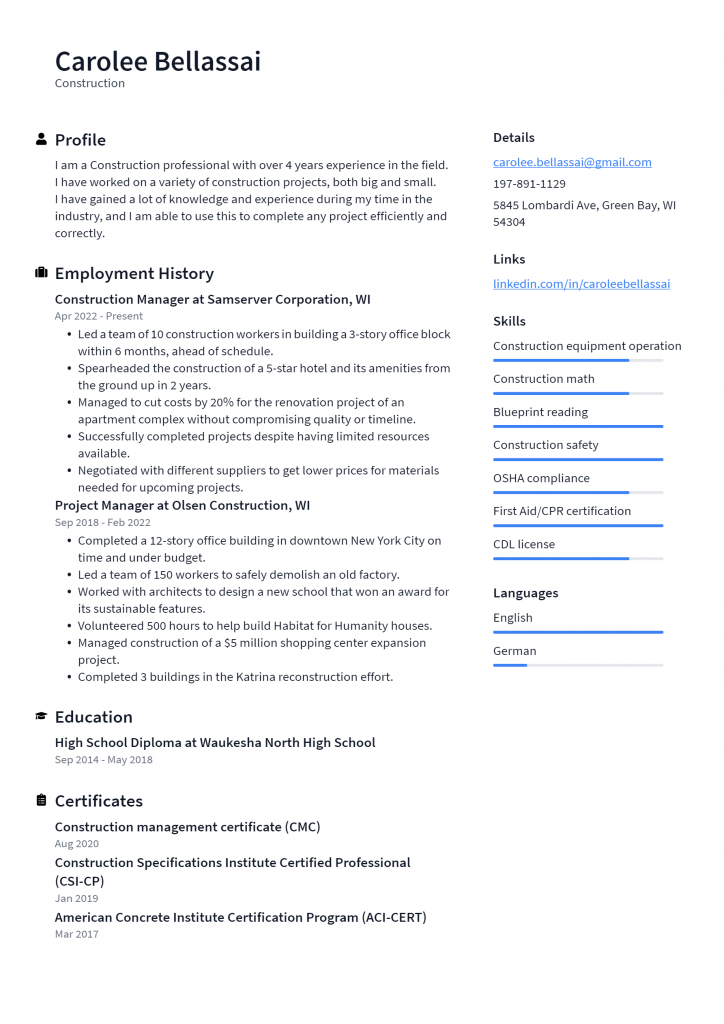
Download This Construction Resume as PDF
Construction manager Resume Example
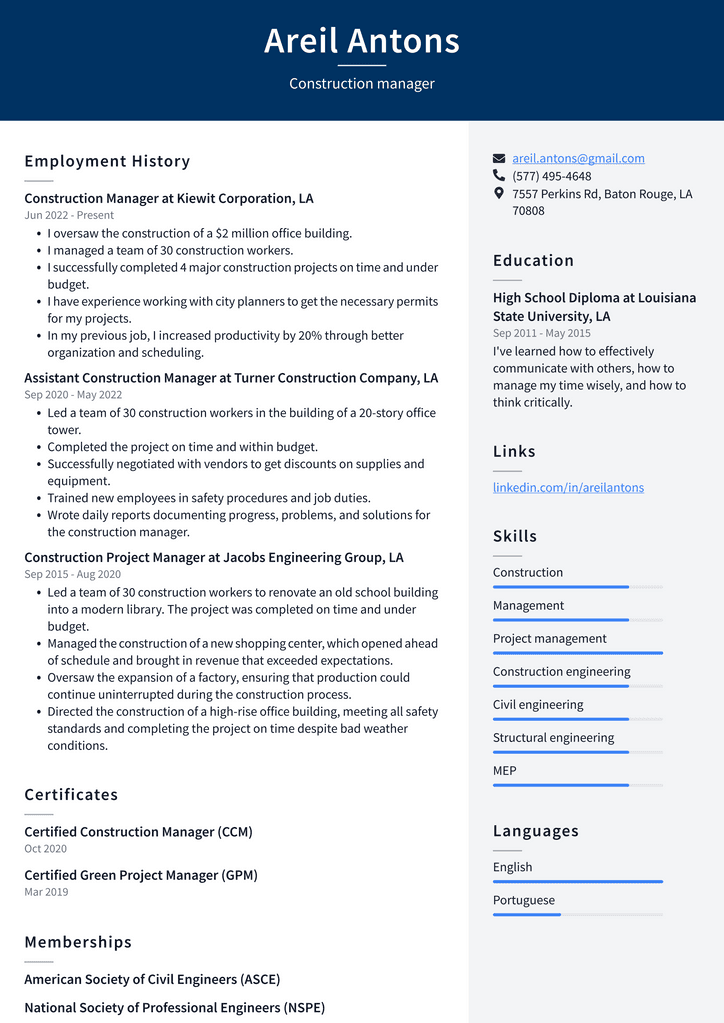
Download This Construction manager Resume as PDF
Construction superintendent Resume Example
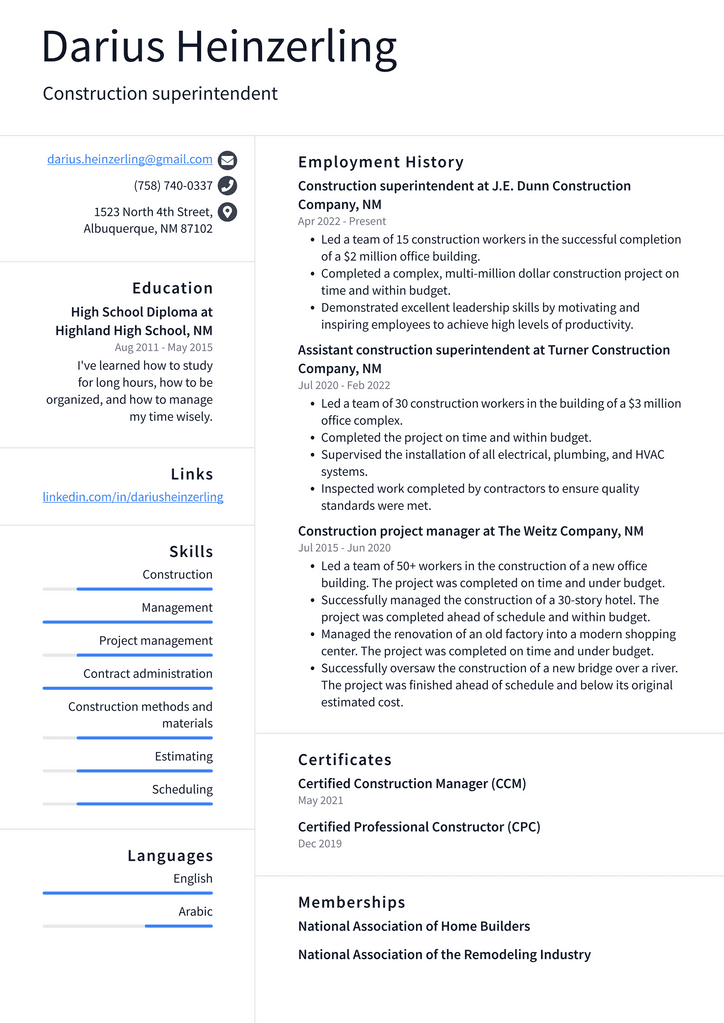
Download This Construction superintendent Resume as PDF
Construction worker Resume Example
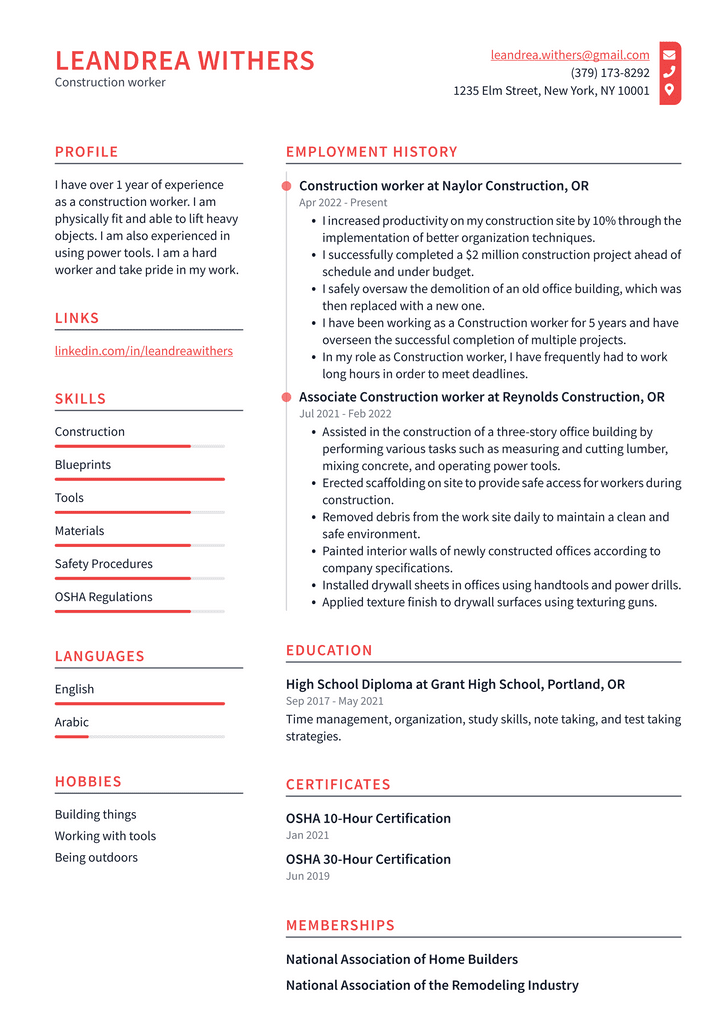
Download This Construction worker Resume as PDF
Construction engineer Resume Example
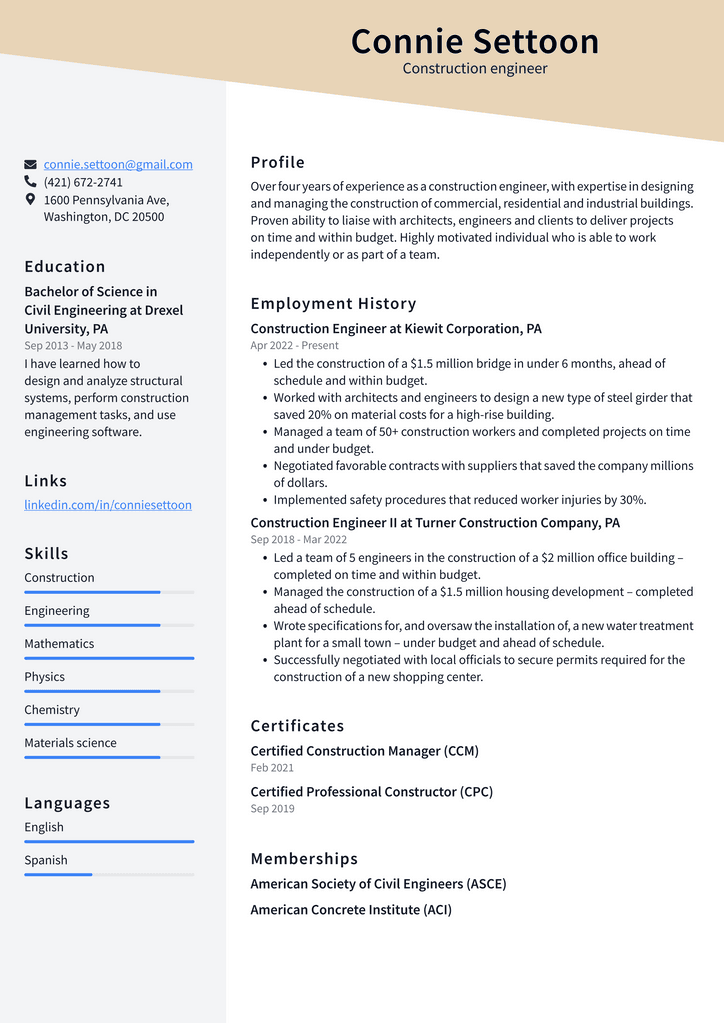
Download This Construction engineer Resume as PDF
Construction foreman Resume Example

Download This Construction foreman Resume as PDF
Construction project manager Resume Example
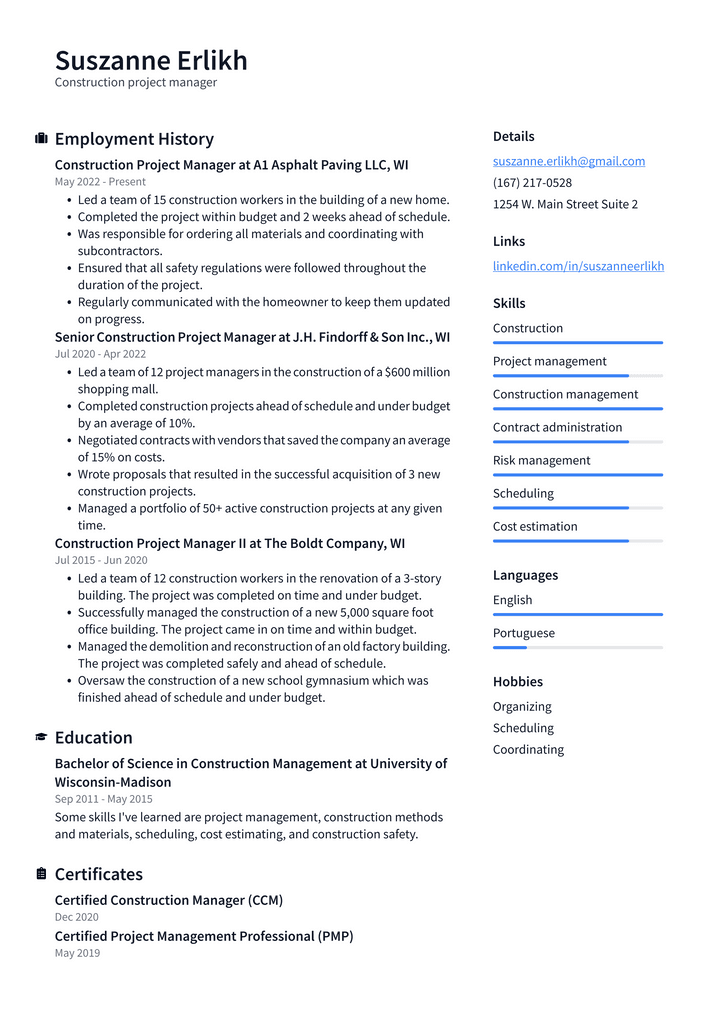
Download This Construction project manager Resume as PDF
Find the Perfect Format for Your Resume
While there are many formats for resumes, the construction field will not ask you to follow one specific style. In general, you should go with whatever form you feel most comfortable with, allowing you to highlight your skills and experience most effectively. If you’re unsure which format will work best, try out a few different types to see which one you like best. For example, a functional resume format may be best if you have little to no experience and are in high school or college. This type of resume focuses on your skills and what you have to offer an employer rather than your previous work history. On the other hand, if you have several years of work experience, a chronological or combination resume format may be best.
Craft an Engaging Introduction
The introduction of your resume is the first thing hiring managers will see, so it’s essential to make a great first impression. In the first sentence, you want to make it clear that you’re the perfect candidate for the job. Keep your introduction short and sweet – two to three sentences at most. A construction resume example might include an opening like, “A motivated and results-driven construction manager with two years of experience in the field. Seeking a position in a growing company where I can utilize my skills and advance my career.” Remember, hiring managers are busy people – the shorter and more to the point you can be, the better. This will help them quickly scan your resume and decide if you’re the right candidate for the job.
List Your Relevant Skills and Experience
Building on your introduction, you should list the most relevant skills and experiences directly underneath your header. For example, if you’re applying for a construction management position, your skills and experience section may look like this: -Construction Management and Administration: Manage a large team to execute construction projects on time and within budget. – Financial Analysis and Reporting: Forecast budgets and financial outcomes for large-scale construction projects. – Construction Logistics: Plan and coordinate construction projects to meet a project’s timeline and budget. – Construction Safety: Create safety plans to ensure the safety of workers on a construction site. Remember that you should list only skills and experience relevant to the job you’re applying for. This is your chance to show hiring managers that you’re the perfect candidate for the job – so don’t hold back.
Include a Professional Profile
Many people mistake putting their education and work history at the top of their resumes. While this is essential information, it can be easily overlooked if placed above your professional profile. A professional profile is a one- or two-line section immediately below your skills and experience section. It is designed to summarize your skills, experience, and qualifications for the job you are applying for. A construction resume example may include the following professional profile: A motivated and results-driven construction manager with two years of experience in the field. I am seeking a position in a growing company where I can utilize my skills and advance my career.
Add your Education
Construction companies want to know that you have the necessary skills and experience for the job – but they also want someone capable of learning new things and evolving with the industry. Your education should be listed below your professional profile on your resume, but it doesn’t need to be listed in any specific order. List all your education, including any education or certification you have received about the job you’re applying for. Include the name of the school you attended, your degree, your grade, and the date you graduated. If you have any relevant certificates or special training, be sure to list those as well. For example, if you have a Certificate of Applied Management or a Construction Logistics Certificate, those are valuable certifications that can help you stand out from the crowd.
Add Your Employment History
Your employment history is the final section you will include on your resume. Construction companies want to know what jobs you’ve held and what responsibilities you’ve held at each of those jobs. This is your chance to show hiring managers that you can take on a new challenge and succeed. List each position you’ve held, including your title, the name of the company you worked for, the city you were in, and the years you worked in each position. If you have gaps in your employment history, include a brief explanation for each. For example, “Left position at Big Construction Company to take care of newborn child” or “Left position at Little Construction Company to pursue higher education.”
Conclusion
Construction is one of the most in-demand career fields today, and it’s no wonder why. The construction industry is growing faster than any other sector in the U.S., with many job postings increasing by as much as 20 percent over the next decade. Whether you’re looking for a construction job or are simply exploring your career options, having a solid resume is essential to landing that perfect interview. As with any job search, you must ensure your resume highlights your skills and experience effectively so hiring managers will be eager to meet you in person. This construction resume example and writing guide will give you all the tips you need to build an impressive document that will get you called for an interview.